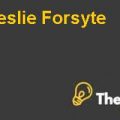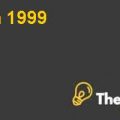Question No: 1
The payback period represents the length of time it would take for the annual returns to cover the initial investment in which the synthetic resin’s payback period was 3.13 years, calculated through the formula initial investment divided by Average annual cash flows. Similarly, the payback period of epoxy resin was 4.44 years, calculated through the same formula as above. However, it can be evaluated that, the payback period method was inappropriate to estimate the length of time it would take to cover the initial outlay because it didn’t take under consideration for discounting (time value of money). Under which, annual cash flows are discounted by discounting factor to arrive at the present value of the cash flows for that year. Moreover, it does not take into consideration the unequal cash flows generated each year, which could cause the management to generate incorrect estimation of the payback period. This, in turn, could compromise the management’s ability to make effective decisions regarding the potential investment.
Question No: 2
The discounted payback period can be calculated by discounting the net cash flow with discount factor at 10% through the formula (1+discount factor) ^-n, wheren= number of year. In which, the discount payback period for synthetic resin was 2.63 years and for epoxy resin was 2.94 years. However, it can be evaluated that the discounted payback period method take under the consideration, the concept of time value of money. This would enable the management of the company to estimate the payback periods from the present values of cash flows,which in turn could allow them to effectively make decisions regarding the potential investment opportunity present. The calculation for the discounted payback period of synthetic Resin and Epoxy Resin are illustrated in the Exhibit 1 & 2 below.
The Dilemma at Day-Pro Harvard Case Solution & Analysis
Exhibit-1
| (Synthetic Resin) | ||||||
| Discount factor @ 10% | 1.000 | 0.909 | 0.826 | 0.751 | 0.683 | 0.621 |
| Present value | $ (1,000,000) | $ 318,182 | $ 330,579 | $ 375,657 | $ 443,959 | $ 434,645 |
| Average cash flows | $ 380,604 | |||||
| Discounted Payback Period | 2.63 | |||||
Exhibit-2
| (Epoxy Resin) | ||||||
| Discount factor @ 10% | 1.000 | 0.909 | 0.826 | 0.751 | 0.683 | 0.621 |
| Present value | $ (800,000) | $ 545,455 | $ 330,579 | $ 225,394 | $ 136,603 | $ 124,184 |
| Average cash flows | $ 272,443 | |||||
| Discounted Payback Period | 2.94 | |||||
Question No: 3
Accounting rate of return can be calculated using the formula Average annual profit divided by average investment. Where the average investment was estimated by adding scrape value in the initial investment, however, in this case scrape value is equal to zero for both projects, then divide the amount by 2 to arrive at an average. Furthermore, the average annual profit is the average of total net profits generated in the life of the project. Therefore, to acquire the ARR the average annual profit is divided by the average investment. In which, the ARR for Epoxy Resin was estimated at 45% and for Synthetic Resin was estimated at 64%,which was much higher than the hurdle rate set by the management. Therefore, as illustrated in the exhibit 3 & 4 below, synthetic Resin project should be accepted, according to ARR...................
This is just a sample partical work. Please place the order on the website to get your own originally done case solution.











